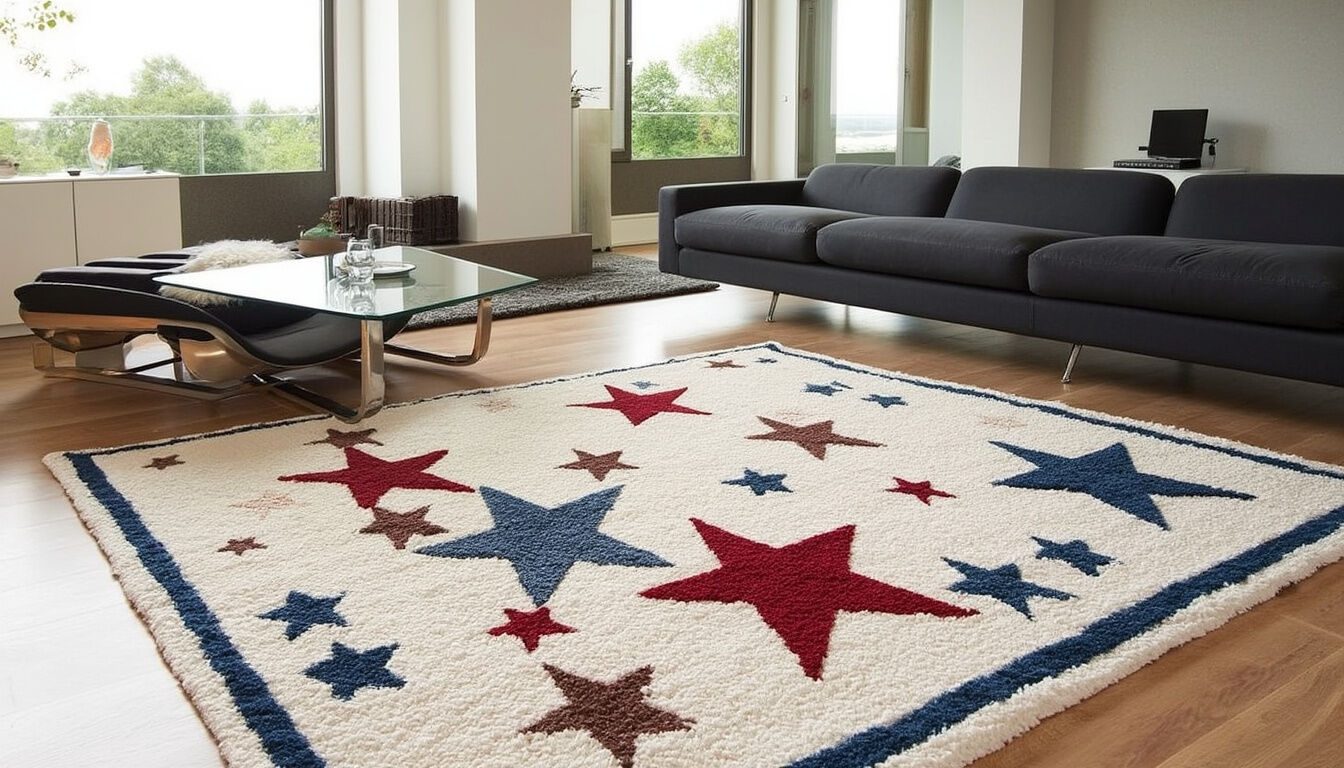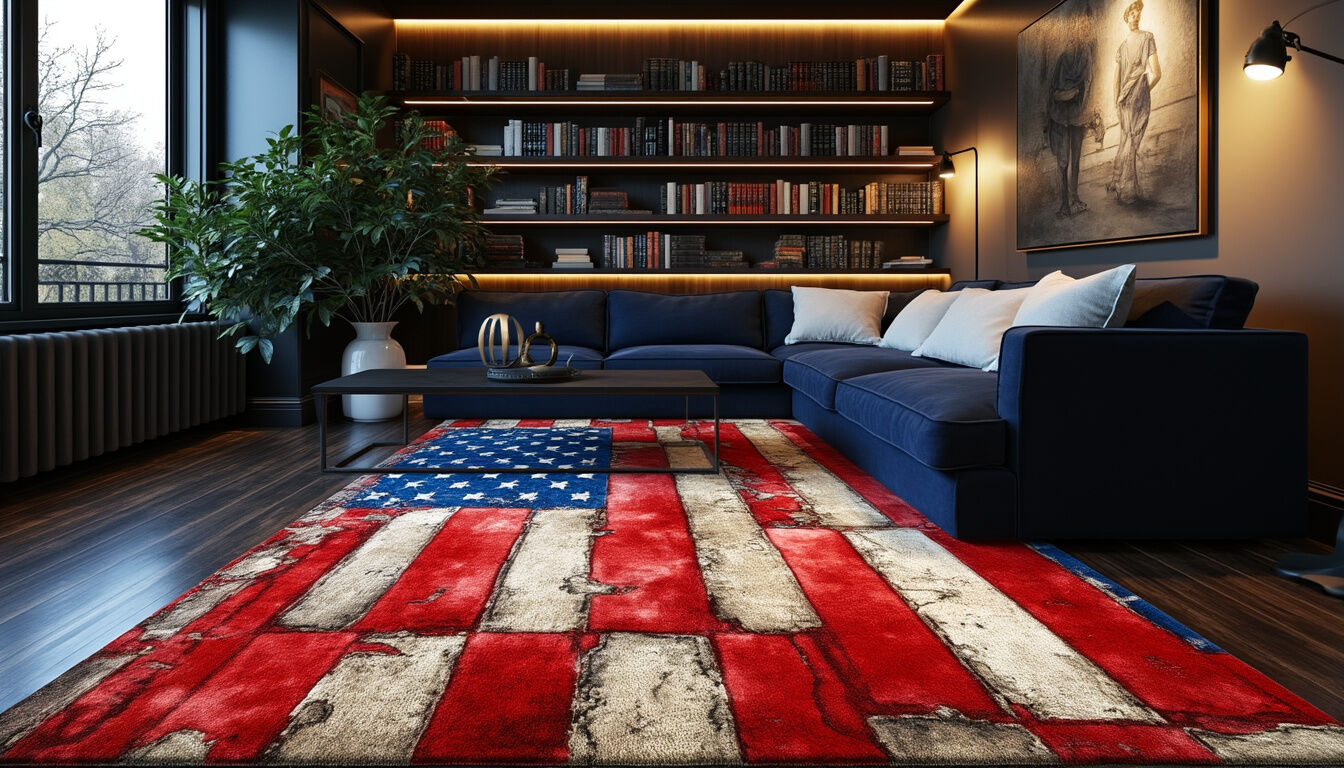In brief — United States of America Rug: key takeaways
Heritage: From artisan floorpieces to mass-produced designs, the United States of America rug blends history with home design.
Designs: Flags, landmarks, and minimalist national palettes meet modern interiors.
Materials: Wool, cotton, synthetics and new eco-fibers balance appearance and durability.
Use: Versatile applications in residences, schools, and civic spaces; some versions are outdoor-ready.
United States of America history has long been woven into domestic textiles, where a simple floor covering becomes a statement of identity. Early 19th-century weavers adapted patriotic motifs—stars, stripes and allegorical scenes—into household carpets that commemorated events and civic pride. Collectors today prize antique pieces for craftsmanship and provenance, while contemporary makers reinterpret the same visual language for modern interiors. The evolution from hand-knotted heirlooms to affordable machine-made options expanded access, placing a United States of America Rug into community centers, classrooms, and living rooms across the country. A single well-designed rug can anchor a room and serve as a tactile reminder of shared narratives, bridging decorative function and cultural memory. This overview surveys origins, stylistic ranges, material science, and practical care to help homeowners, designers, and institutions select pieces that resonate both aesthetically and historically.
The Origin and Heritage of the United States of America Rug
Early pieces combined European weaving techniques with local motifs to celebrate milestones. Veterans and civic groups commissioned carpets depicting battles, presidents, and national symbols.
Key influences: folk art, colonial workshops, and industrial textile mills.
Antique value: provenance, hand-knotting, and condition determine rarity.
Incorporating Patriotic Elements: Flags, Landmarks, and National Symbols
Designers use flags, the eagle, and famous sites to create immediate recognition. A United States of America Rug featuring a landmark can function as both décor and educational tool in schools or museums.
Examples include classroom floorpieces that pair visuals with lesson plans, and lobby rugs that signal institutional identity.
From Handcrafted Tradition to Accessible Modern Designs
Handmade rugs remain prized for nuance and labor; machine-made products democratized those visuals. Today, manufacturers use digital printing and tufting to reproduce historic motifs affordably.
An artisan hand-knotted United States of America Rug will command a premium, while a machine-made variant offers wide distribution—both sustain the cultural lineage.

United States of America Rug Designs, Materials, and Craftsmanship
Styles range from literal patriotism to subtle modernism. Buyers choose based on scale, color, and intended use.
Material | Characteristic | Best Use |
|---|---|---|
Wool | Soft, resilient | High-traffic living areas |
Cotton | Lightweight, washable | Children’s rooms |
Synthetic | Colorfast, low-cost | Outdoor and utility spaces |
Plant fibers | Textured, eco-friendly | Low-moisture rooms |
Comparing Patriotic, Historical, and Contemporary American Rug Styles
Patriotic rugs emphasize iconography; historical rugs tell stories through scenes; contemporary options favor abstraction and palette.
Patriotic: flags, stars, insignia for statement pieces.
Historical: narrative scenes valued by collectors.
Contemporary: minimal palettes incorporating national colors subtly.
Material Choices and Craftsmanship: Wool, Cotton, Synthetics, and Quality
Material affects maintenance and longevity. Consider fiber, pile height, and weave when evaluating price versus performance.
Durability assessments often guide institutional purchases—municipal offices prefer stain-resistant synthetics, while galleries select hand-knotted wool.
Cultural Significance, Placement, and Care of USA Rugs
Rugs serve civic memory and domestic comfort; they are common gifts for graduations and retirements. In public settings, a United States of America rug becomes a focal point for ceremonies.
Placement: living room centerpieces, classroom learning mats, and lobby statements.
Care: vacuum regularly, address stains promptly, rotate to even wear.
Symbolism and Identity: USA Rugs in Homes, Schools, and Public Spaces
These rugs foster belonging and narrate history. Museums often pair them with interpretive signage to contextualize imagery.
Institutions that commission bespoke pieces build archives and provenance that increase cultural value.
Selecting the Ideal United States of America Rug, Proper Maintenance, and Emerging Trends
Balance aesthetic goals with practical constraints: size, slip resistance, cleaning routines, and UV exposure for outdoor use are essential considerations.
Emerging trends include eco-friendly fibers, customization, and tech-enabled features; see discussions on manufacturing innovation in sources such as industry analyses and market reports like AI-driven design coverage. For background on broader supply-chain shifts consult blockchain applications and market sentiment pieces such as financial trend reports.
Final insight: selecting a United States of America Rug combines practical planning with an opportunity to express collective memory and contemporary taste.
How do I choose between wool and synthetic rugs?
Wool offers longevity and a premium feel; synthetics provide stain resistance and cost-efficiency. Match material to traffic levels and cleaning capacity.
Can patriotic rugs be used outdoors?
Yes—look for specifically rated outdoor materials and UV-stable dyes. Outdoor versions are engineered for moisture and abrasion.
What maintenance extends a rug’s life?
Vacuum routinely, treat spills immediately, rotate periodically, and seek professional cleaning for deep soil or antique pieces.


